Joint pain during period. Joint Pain During Menstruation: Causes, Effects, and Management Strategies
How does the menstrual cycle affect joint pain in women with arthritis. What causes increased joint discomfort during periods. Can hormonal fluctuations exacerbate arthritis symptoms. How to manage arthritis flares associated with menstruation.
The Link Between Menstrual Cycles and Arthritis Flares
Many women with inflammatory arthritis conditions like rheumatoid arthritis (RA) report experiencing increased joint pain and other symptoms in the days leading up to and during their menstrual periods. While the exact relationship between menstruation and arthritis flares remains unclear scientifically, there are several theories about why this connection may exist.
Reported Symptoms During Menstrual Cycle
Common symptoms reported by women with arthritis around their periods include:
- Increased joint inflammation, especially in the hands and feet
- Greater fatigue and disrupted sleep
- Mild fever
- Worsened morning stiffness
- Higher pain levels overall
These symptoms tend to peak in the premenstrual and menstrual phases, with some improvement occurring in the days and weeks following menstruation.
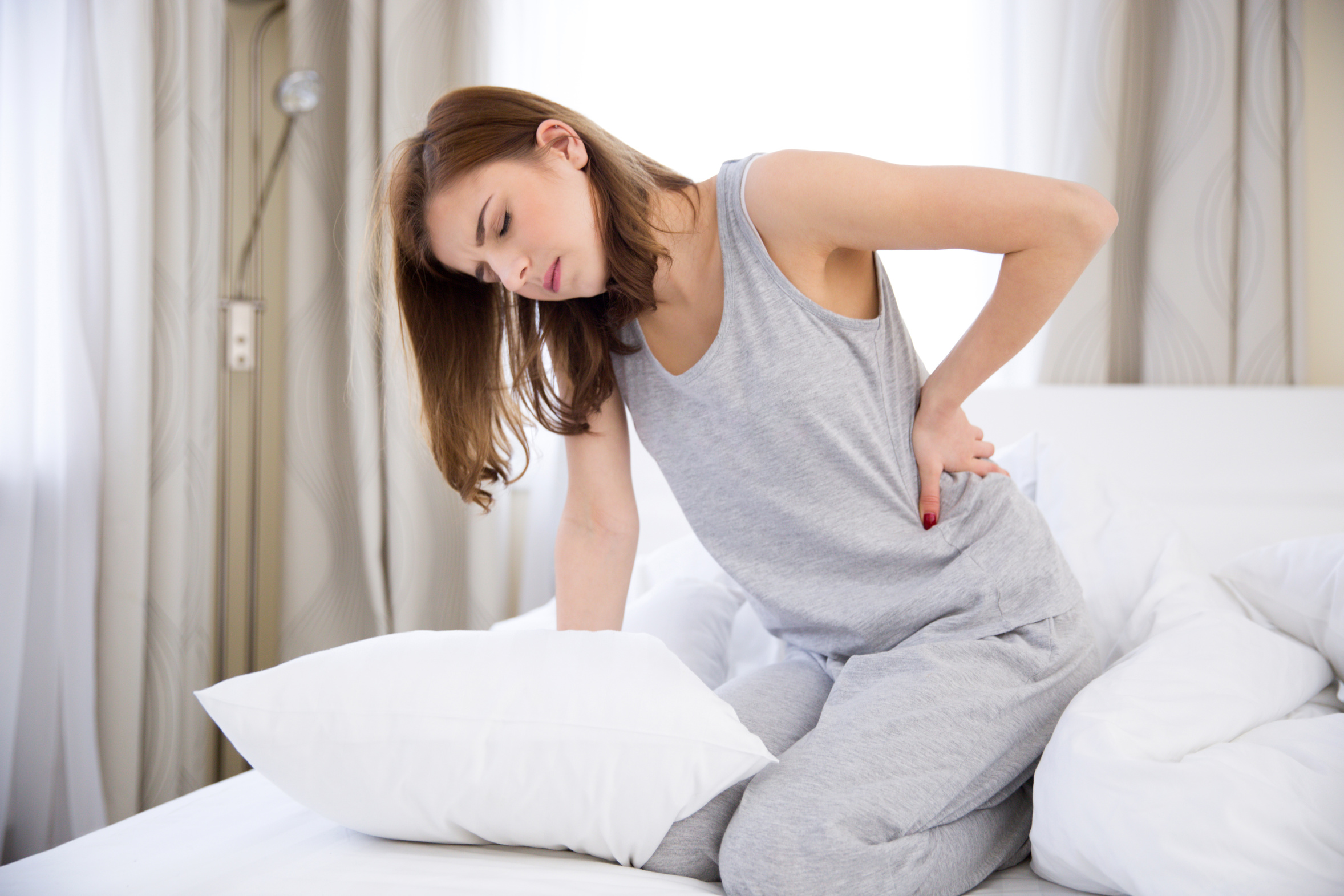
Hormonal Fluctuations and Their Impact on Arthritis
One of the primary theories for why arthritis symptoms may worsen around menstruation involves the fluctuation of hormone levels throughout the menstrual cycle.
Estrogen and Progesterone Levels
During a typical menstrual cycle, estrogen and progesterone levels go through predictable changes:
- Levels are lowest right before and during menstruation
- Estrogen rises after menstruation, peaking before ovulation
- Both hormones increase after ovulation as the body prepares for potential pregnancy
- Levels plummet again if pregnancy doesn’t occur, leading to the premenstrual phase
Research suggests these hormonal shifts may influence arthritis disease activity and symptom severity. How exactly do hormones affect arthritis symptoms? Estrogen and progesterone may impact inflammation levels both systemically and within the joints themselves. When these hormone levels are low, such as before and during menstruation, inflammation and pain tend to increase for many women with arthritis.

Pain Perception Changes During the Menstrual Cycle
Another factor that may contribute to increased arthritis discomfort around menstruation is a change in pain perception. Some studies indicate that women’s pain thresholds may be lower when estrogen levels are at their lowest points in the cycle.
In one small study of women with chronic pain conditions, participants reported significantly higher pain levels during the menstrual and premenstrual phases compared to other points in their cycles. This suggests that hormonal fluctuations may influence not only actual inflammation levels but also how acutely pain is felt.
The Role of Oral Contraceptives in Managing Arthritis Symptoms
Given the potential connection between hormonal changes and arthritis flares, some researchers have investigated whether oral contraceptive pills (OCPs) could help manage symptoms in women with inflammatory arthritis.
Research on OCPs and Arthritis
Studies on this topic have produced mixed results:
- Some research suggests OCPs may improve pain and function in women with RA
- A study in Iran found that women taking birth control pills reported improvements in disease activity compared to those on placebo
- Other studies have shown conflicting or inconclusive results
Can oral contraceptives definitively ease arthritis flares? While some women report benefits, more research is needed to establish clear guidelines on using OCPs specifically for managing arthritis symptoms related to menstruation.

Strategies for Managing Arthritis Symptoms During Menstruation
For women who experience increased arthritis pain and inflammation around their periods, there are several strategies that may help manage symptoms:
- Track your symptoms: Keep a journal to identify patterns in how your arthritis changes throughout your menstrual cycle
- Plan ahead: If you know you tend to flare before or during your period, schedule rest and self-care time accordingly
- Stay active: Gentle exercise can help reduce stiffness and pain, even during flares
- Manage stress: Stress can exacerbate both PMS and arthritis symptoms, so practice relaxation techniques
- Discuss medication adjustments: Talk to your rheumatologist about potentially adjusting medication dosages around your period
- Consider hormonal treatments: Explore whether birth control or other hormonal therapies might help balance symptoms
- Prioritize sleep: Focus on good sleep hygiene, as fatigue can worsen arthritis pain
The Importance of Individualized Care for Women with Arthritis
While many women with inflammatory arthritis report cyclical changes in their symptoms related to menstruation, it’s crucial to recognize that experiences can vary widely between individuals. Some women may notice significant flares around their periods, while others may see little to no change in their arthritis symptoms throughout their cycles.
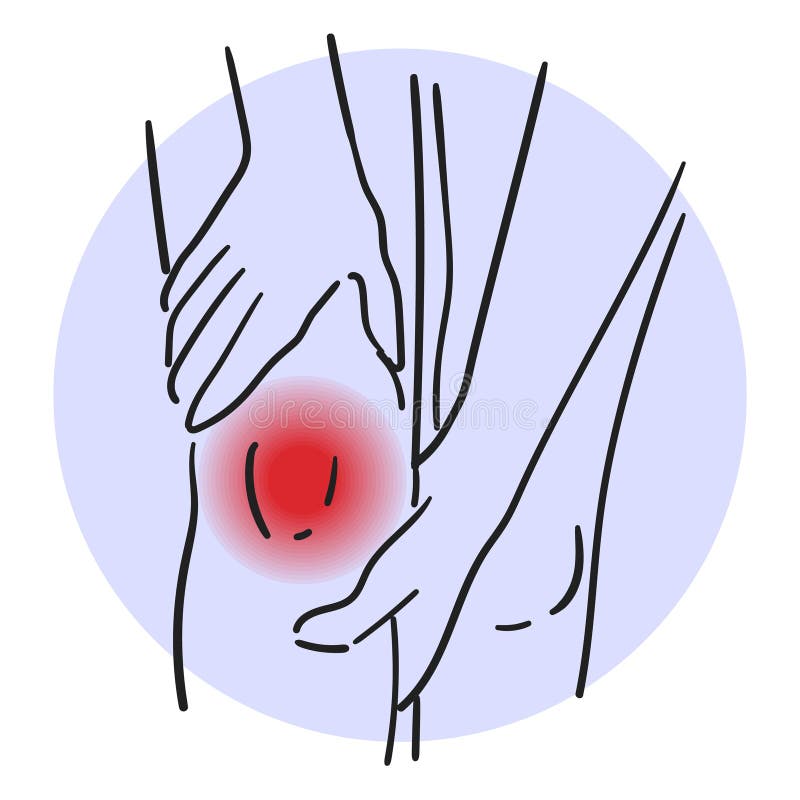
Why is personalized care so important for women with arthritis? Each person’s hormonal balance, pain sensitivity, and disease activity are unique. What works for one patient in managing menstrual-related flares may not be effective for another. This highlights the need for open communication between patients and their healthcare providers to develop tailored management strategies.
Future Research Directions on Menstruation and Arthritis
While anecdotal evidence and some studies suggest a link between menstrual cycles and arthritis flares, many questions remain unanswered. Future research in this area could focus on:
- Larger, more comprehensive studies on hormone fluctuations and arthritis disease activity
- Investigation of potential biological mechanisms behind menstrual-related flares
- Development of targeted treatments to address hormonal influences on arthritis
- Exploration of how other reproductive health factors (e.g., pregnancy, menopause) impact arthritis over time
How might better understanding of this connection improve care for women with arthritis? By clarifying the relationship between menstrual cycles and arthritis symptoms, researchers and clinicians may be able to develop more effective, personalized treatment approaches that take hormonal fluctuations into account.

Addressing the Broader Impact of Menstrual-Related Arthritis Flares
For many women with inflammatory arthritis, the cyclical nature of menstrual-related symptom flares can have far-reaching effects on their lives. Beyond the physical discomfort, these regular increases in pain and fatigue can impact:
- Work productivity and attendance
- Social engagements and relationships
- Mental health and emotional well-being
- Overall quality of life
How can healthcare providers better support women dealing with menstrual-related arthritis flares? A holistic approach that addresses both the physical symptoms and the broader life impacts is crucial. This may involve:
- Educating patients about the potential connection between menstruation and arthritis symptoms
- Providing resources for managing both arthritis and premenstrual syndrome (PMS) symptoms
- Offering support for mental health concerns related to chronic pain and hormonal fluctuations
- Collaborating with other specialists (e.g., gynecologists, endocrinologists) for comprehensive care
- Advocating for workplace accommodations or flexibility to help manage cyclical symptom changes
The Role of Patient Advocacy and Support Groups
Organizations like CreakyJoints and patient advocacy groups play a vital role in supporting women who experience arthritis flares related to their menstrual cycles. These communities can provide:

- A platform for sharing experiences and coping strategies
- Access to up-to-date research and information on managing arthritis
- Opportunities to participate in research studies to advance understanding of this topic
- Emotional support and validation for those dealing with cyclical symptom changes
How can patient communities contribute to better understanding and management of menstrual-related arthritis flares? By fostering open dialogue and collecting real-world experiences, these groups can help identify common patterns, effective management strategies, and areas where further research or clinical attention is needed.
Integrating Menstrual Health into Overall Arthritis Care
As awareness grows about the potential impact of menstrual cycles on arthritis symptoms, there’s an increasing need to incorporate this aspect of women’s health into comprehensive arthritis care plans. This integration could involve:
- Routine discussions about menstrual cycles and symptoms during rheumatology appointments
- Collaboration between rheumatologists and gynecologists for coordinated care
- Development of treatment protocols that account for hormonal fluctuations
- Inclusion of menstrual-related questions in arthritis assessment tools and research studies
What benefits could come from better integrating menstrual health into arthritis care? By acknowledging and addressing the cyclical nature of some women’s arthritis symptoms, healthcare providers may be able to offer more personalized and effective treatment plans. This could lead to improved symptom management, better quality of life, and potentially even advancements in understanding the complex relationship between hormones and inflammatory arthritis.

Empowering Women to Advocate for Their Health
For women who suspect their arthritis symptoms may be influenced by their menstrual cycles, it’s important to feel empowered to discuss this with their healthcare providers. Some steps women can take include:
- Keeping detailed records of symptom changes throughout their cycles
- Bringing up any observed patterns during medical appointments
- Asking about potential treatment adjustments or additional testing if needed
- Seeking second opinions or referrals to specialists if concerns are not adequately addressed
How can women become more effective advocates for their health in this area? By being proactive, well-informed, and persistent in seeking answers and appropriate care, women can play a crucial role in advancing understanding and treatment of menstrual-related arthritis flares.
As research in this area continues to evolve, it’s clear that the relationship between menstrual cycles and arthritis symptoms is complex and highly individual. By fostering open communication, supporting ongoing research, and taking a holistic approach to care, the medical community can work towards better understanding and managing this aspect of women’s health in the context of inflammatory arthritis.

Your Period, Menstrual Cycle, and Arthritis Flares: What’s the Connection?
Eileen Davidson doesn’t need a calendar to predict the start of her period. In the days leading up to it, she gets bloated, gassy, and ravenous for really bad foods. Her acne flares up, her mood becomes more irritable, and her sleep gets disrupted.
This PMS struggle is real for many women, but for Eileen, who is a patient advocate in the CreakyJoints community and lives with rheumatoid arthritis (RA), this time of the month feels extra tough.
“Night sweats set in about a week or so before, and get worse the closer to my period,” says Eileen, 34. When her sleep is poor, she’s more tired and sedentary during the day, which often exacerbates her rheumatoid arthritis pain.
“I also notice more inflammation in my hands and feet, and tend to run a mild fever,” explains Eileen, who was diagnosed with RA in 2015. “When my period arrives, the night sweats calm down, but the fever and fatigue continue. ”
”
Eileen is not alone: In one study that included 267 members of the CreakyJoints community and its ArthritisPower patient research registry, nearly half of respondents (most of whom had RA) felt that their arthritis disease activity varied over the course of their menstrual cycle, with the worst flares occurring several days prior to or during menstruation.
“Anecdotally, many women note worsening of symptoms primarily during the week or so that is the premenstrual part of the cycle into the menses,” says Lisa R. Sammaritano, MD, a rheumatologist at Hospital for Special Surgery in New York City. But scientifically the link between menstrual cycles and inflammatory arthritis flares remains unclear.
How Your Menstrual Cycle May Affect Inflammatory Arthritis Flares
Experts agree that more research is needed, but there are some theories.
Fluctuating Hormone Levels
Research suggests that variations in hormone levels that occur during your menstrual cycle may influence arthritis disease activity and the severity of symptoms.
In the days leading up to and during your period, levels of the hormones estrogen and progesterone are low. One small study published in the journal Rheumatology found that women with RA reported increased pain, fatigue, and disease activity right before their period. Those with systemic lupus erythematosus (SLE) experienced similar symptom flares during menses.
After your period, estrogen levels rise, peaking right before ovulation (which occurs mid-cycle, when your ovaries release an egg). During ovulation, estrogen dips; then afterward, both estrogen and progesterone levels steadily increase as your body prepares for a potential pregnancy.
Women have reported that their inflammatory arthritis symptoms improve several days after and up to two weeks after their period. One study found morning stiffness was reduced in RA patients during the post-ovulatory phase, when these female hormones were high.
Toward the end of your menstrual cycle, if the egg isn’t fertilized and you’re not pregnant, both estrogen and progesterone plummet again — this is your premenstrual (PMS) week.
Women who are pregnant, however, have reported decreased disease activity during pregnancy — when estrogen hormones and progesterone levels remain high — and may experience flares postpartum, when those hormone levels decrease.
“It seems likely that hormones may impact disease activity directly, such as by promoting or alleviating inflammation,” says Dr. Sammaritano. They may have a systemic effect on the immune system, as well as within the joint.
Pain Perception
Another potential connection between flares in arthritis symptoms and your period is pain perception. When estrogen levels are low, women may report more pain, according to some research.
In one study of 20 women with chronic pain, researchers found rated pain significantly higher in the menstrual and premenstrual phases than in the mid-menstrual and ovulatory phases. “It may be that a change in pain threshold contributes to pain and fatigue during the premenstrual phase, in addition to a true increase in inflammation. ” says Dr. Sammaritano.
” says Dr. Sammaritano.
Can Oral Contraceptive Pills Ease Arthritis Flares?
The jury is out on this, too: Some research suggests oral contraceptives pills (OCPs) may ease pain and improve function in women with RA. In one study from researchers in Iran, 100 women with rheumatoid arthritis were randomized to take birth control pills or a placebo for eight weeks. Researchers measured patients’ tender and swollen joints, blood levels of inflammation, and self-reports of pain at the beginning and end of the study period. They found that those on the birth control pills reported improvements in disease activity compared to those taking placebo pills.
Other studies have shown conflicting results. In the survey of CreakyJoints and ArthritisPower members with inflammatory arthritis, of those who used oral contraceptive pills, 70 percent of the women did not report changes, fewer than 10 percent reported improvement, and slightly more than 10 percent reported worsening of symptoms.
Talk to your rheumatologist to determine the risks and benefits and if OCPs are right for you.
How to Ease Arthritis Flares During Your Period
You know your when your body is going through PMS, and likely have some go-to strategies for helping to ease symptoms. If you get bloated, you cut back on salty foods and opt for elastic-waist sweatpants instead of jeans. If you get cranky, you might do a little more yoga to reduce stress.
If you suspect that your approaching period exacerbates arthritis symptoms, here are ways to help ease flares:
Follow your prescribed RA treatment plan
Keeping your RA disease activity under control will help reduce inflammation in your body. That’s one less factor possibly contributing to pain, mood swings, sleep disruption, and more.
Ask about pain medications
Nonsteroidal anti-inflammatory drugs (NSAIDs) — such as over-the-counter ibuprofen (Advil, Motrin IB, others) and naproxen sodium (Aleve) — can relieve pain and reduce inflammation. If you aren’t already taking these medications regularly for arthritis-related pain, says Dr. Sammaritano, your doctor may suggest adding it to your regimen the week before your period. Talk to your health care provider to see if this is appropriate and safe for you.
If you aren’t already taking these medications regularly for arthritis-related pain, says Dr. Sammaritano, your doctor may suggest adding it to your regimen the week before your period. Talk to your health care provider to see if this is appropriate and safe for you.
Remember that even over-the-counter NSAIDs can have side effects, such as stomach problems (pain, constipation, diarrhea, ulcers) and more. Make sure you follow dosing instructions and that your doctor knows about all the medications and supplements you take.
Track your symptoms
That’s what Eileen did to help her better understand her menstrual cycle and how it affected her overall health. “If you know exactly how RA symptoms get worse around your period, you can be a little more proactive,” says Nilanjana Bose, MD, MBA, a rheumatologist at the Rheumatology Center of Houston in Texas. For instance, maybe you take extra care to eat well or avoid other arthritis triggers, she says.
You can use our ArthritisPower app to track your symptoms and disease activity and share your results with your doctor.
Carve out time for gentle exercise
The benefit is twofold: Exercise not only helps ease PMS symptoms (such as mood changes and difficulty concentrating), but it can strengthen the muscles around your joints, improve flexibility, and fight fatigue.
“I do some gentle movement every hour to prevent stiffness and relieve pain,” says Davidson.
Apply heat or cold
A warm compress can help ease pain and stiffness, cold can help ease inflammatory symptoms, such as swelling. Try both to see which works best for you or alternate between the two. Here are simple ways to do hot therapy and cold therapy at home.
Give yourself a break
“My period can take so much out of me,” says Eileen. “It can feel like a daunting task trying to refresh myself.” But she allows her body the time it needs to rest and makes it a point during this time to be kind and gentle to herself. “I remind myself that this will pass,” she says.
Estrogen and joint pain during menstruation or menopause
This is an automatically translated article.
Joint pain is one of the most common symptoms of menstruation or menopause. If you feel a little stiff and painful in your joints, especially in the morning, you should go to a medical facility for an examination to control your symptoms.
1. What is estrogen?
Estrogen is an important hormone for sexual and reproductive development, mainly in women. They are also known as female sex hormones. The term “estrogen” refers to all the chemically similar hormones in this group, namely estrone, estradiol (mainly in women of reproductive age), and estriol.
2. Function of Estrogen
In women, estrogen is produced mainly in the ovaries. The ovaries are grape-sized glands located inside the uterus and are part of the endocrine system. Therefore, estrogen has the following functions:
Estrogen is produced by fat cells and the adrenal glands, helps to regulate the menstrual cycle, controls the growth of the lining of the uterus during the first part of the cycle. If the egg is fertilized, estrogen works with progesterone to prevent ovulation during pregnancy. During pregnancy, the placenta produces estrogen, specifically the hormone estriol. Estrogen controls lactation and other breast changes, both during adolescence and during pregnancy. Estrogen plays an important role in bone formation, working with vitamin D, calcium and other hormones to effectively break down and rebuild bone according to the body’s natural process. As estrogen levels begin to decline in middle age, bone rebuilding slows down. For post-menopausal women, more bone is broken down than is produced. This is why postmenopausal women are four times more likely to have joint pain and osteoporosis than men. Estrogen even affects the skin, hair, mucous membranes, and pelvic muscles. For example, estrogen can make the skin darker. Some researchers hope to use this information to create fake skin creams that are safe by triggering estrogen’s tanning response, without causing other hormone-induced changes in the body.
If the egg is fertilized, estrogen works with progesterone to prevent ovulation during pregnancy. During pregnancy, the placenta produces estrogen, specifically the hormone estriol. Estrogen controls lactation and other breast changes, both during adolescence and during pregnancy. Estrogen plays an important role in bone formation, working with vitamin D, calcium and other hormones to effectively break down and rebuild bone according to the body’s natural process. As estrogen levels begin to decline in middle age, bone rebuilding slows down. For post-menopausal women, more bone is broken down than is produced. This is why postmenopausal women are four times more likely to have joint pain and osteoporosis than men. Estrogen even affects the skin, hair, mucous membranes, and pelvic muscles. For example, estrogen can make the skin darker. Some researchers hope to use this information to create fake skin creams that are safe by triggering estrogen’s tanning response, without causing other hormone-induced changes in the body. .
.
Estrogen có tác dụng điều hòa chu kỳ kinh nguyệt
3. Can menopause cause joint pain?
Joint pain is one of the common menopause symptoms, reducing mobility and flexibility. The causes of joint pain in menopause and how to treat and prevent it are all related to lifestyle, diet, naturopathy and supplements.
While joint pain and stiffness is inevitable as we age, when women reach menopause, typically between the ages of 45 and 55, they are often surprised to discover that joint pain is a among the most common symptoms aside from nighttime hot flashes, sweating, menstrual cycle changes, and mood swings.
Joints involved in high impact movements such as hips and knees are most commonly affected. Elbows, neck, shoulders, hands, and fingers can also be affected by joint pain.
Some causes of joint pain during menopause include:
Hormonal disorders. Loss of water. Weight gain. Improper diet. Poor posture. Increased sensitivity to pain.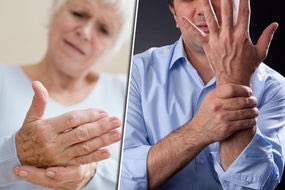
4. How do hormonal changes affect joint pain?
Decreased estrogen levels are thought to be one of the main causes of joint pain during menopause. When you reach menopause, the level of estrogen in your body begins to drop. Estrogen is responsible for regulating fluid levels in the body, so if levels of this hormone are low, the body becomes less able to retain water, affecting the hydration and lubrication of joint tissues, including cartilage, ligaments and tendons.
Up to 80% of cartilage is water, they act as a cushion between bones, absorbing shock and reducing friction. Water is also a natural part of synovial fluid, which helps joints move without creating friction.
Water is also needed to help support the flexibility and elasticity of ligaments and tendons. Ligaments connect one bone to another and are necessary for joint stability, while tendons connect your muscles to bones. As ligaments and tendons lose their elasticity, your range and ease of movement can be reduced.
Therefore, without enough water, the flexibility and lubricating ability of joint tissues can be affected. When this protective and supportive property is impaired, it can cause pain and stiffness.
In short, when you reach menopause, the level of estrogen in your body starts to drop. Estrogen is responsible for regulating fluid levels in the body, so if levels of this hormone are low, the body becomes less able to retain water, affecting the hydration and lubrication of joint tissues, including cartilage, ligaments and tendons.
Please dial
HOTLINE
for more information or register for an appointment HERE.
Download MyVinmec app to make appointments faster and to manage your bookings easily.
References: Healthline.com, Pubmed.ncbi.nlm.nih.gov
XEM THÊM:
- Uses of Cyclogest 200mg
- Foods that increase progesterone levels naturally
- Medical abortion (medicine) until the end of 9 weeks of amenorrhea
Tags:
Progesterone
Loãng xương
Đau khớp
Estrogen
Chu kỳ kinh nguyệt
Mãn kinh Đau khớp
Hormone estriol
Phụ khoa
Muscles hurt during menstruation – Body aches before menstruation
home
About the pain
- Periodic pain
August 30, 2021
Period pain
Many women are told about the imminent onset of menstruation not only
calendar, but also the appearance of premenstrual symptoms, which can
disrupt the habitual way of life. One of the symptoms is pain and aches in the muscles.
One of the symptoms is pain and aches in the muscles.
Let’s find out why there is muscle pain before and during menstruation,
what else can cause such complaints and how you can alleviate the condition.
Why does the whole body hurt during menstruation?
Pain during menstruation is a common phenomenon, its frequency
reaches 90% 1 . In addition to the classic menstrual pains in
abdomen, women may experience pain in the joints, lower extremities, back
and muscles, feeling of numbness of hands and feet, coldness
limbs 2.14 . For some, pain may occur sporadically, and
some are stalked throughout their reproductive
age 9 .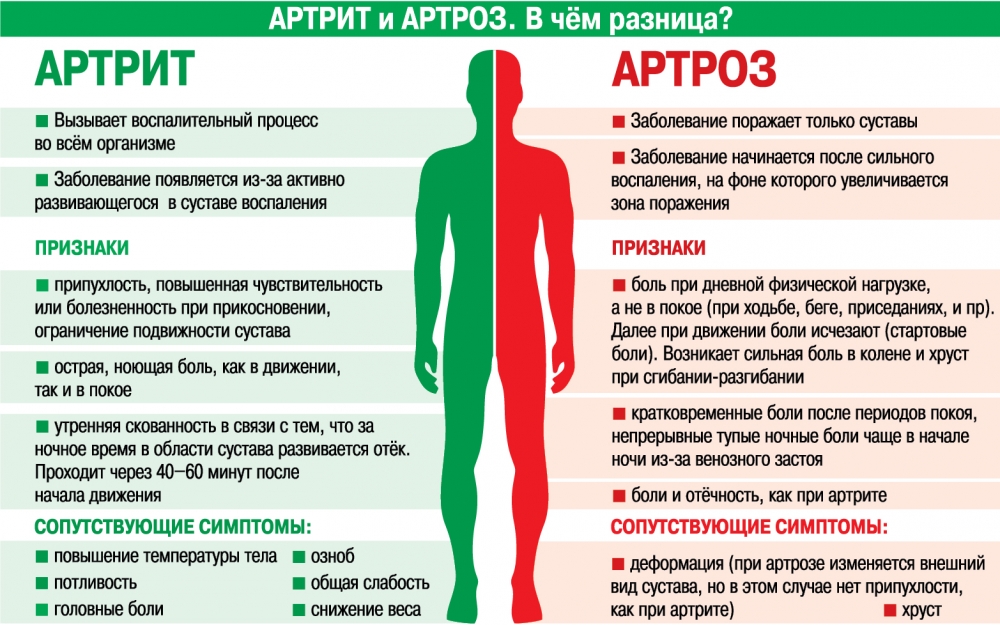 Causes of muscle pain and body aches during menstruation
Causes of muscle pain and body aches during menstruation
may be different.
During adolescence and young age
Relative hyperestrogenism
excess estrogen against the background of insufficient production of progesterone 3 . Estrogens
increase uterine contractions, while progesterone, on the contrary, inhibits
excessive contractile activity. With a lack in the body
progesterone increases the action of prostaglandins, which cause spasm
myometrium and muscles of other pelvic organs. Prostaglandins work
on nerve endings, due to which susceptibility to pain is greatly
increases 3.4 . This is the mechanism of development, the so-called primary dysmenorrhea,
which usually occurs in adolescence 1-3 years after
menarche, with the onset of ovulation 2 .
Vitamin deficiency
Vitamin D deficiency has been shown to cause myopathy (muscle damage)
15 . Atrophy of individual muscle groups can provoke
mechanical stress in intact muscles due to their overload, which can
be the basis for the formation of pain zones in the muscles 15 . Besides,
increased perception of pain may be due to a lack of B vitamins
B, which normally have a neuroprotective, sedative and analgesic effect
action 16.17 .
Weak connective tissue syndrome
May be associated with congenital or acquired magnesium deficiency 18 .
Magnesium deficiency is possible with hyperestrogenism, when the mineral is intensely
washed out of the bone tissue. Violation of magnesium metabolism leads to an increase
Violation of magnesium metabolism leads to an increase
the rate of collagen breakdown, which occurs with connective dysplasia
fabric, which in 9times the risk of developing primary dysmenorrhea
for girls 6 .
Risk factors for developing muscle pain during
dysmenorrhea characteristic of adult age
Gynecological pathology and previous
operations . A common cause of muscle pain, especially affecting
pelvic floor muscles, is a gynecological pathology 8 . At
this chronic pain is localized in the lower abdomen, lower back, in
region of the sacrum. Pain can spread to muscles and fascia from the focus
inflammation or endometriosis in the pelvis, causing symptoms of secondary
dysmenorrhea 2. 9 .
9 .
Chronic inflammatory process of small organs
pelvis can lead to secondary endocrine disorders, decrease
progesterone synthesis and lowering the threshold of pain sensitivity due to
prolonged existence of pain 9 .
Degenerative diseases of the lumbosacral
spine section . If the lower spine is affected, then
pain can spread to the pelvic organs and legs. So, when involved in
pathological process of the lumbar roots pain, sensations
tingling, burning in the thighs, groin, lower abdomen, external
genitals, knees and legs. Muscle pain may accompany
osteochondrosis and other degenerative diseases of the lower part
spine. Due to pain, the muscle contracts, tenses, muscle
Due to pain, the muscle contracts, tenses, muscle
spasm, and the spasm makes the pain worse 10 .
Perimenopausal
Decrease in the level of sex hormones
In women during the menopausal transition, work gradually fades
ovaries, the number of follicles decreases, the production of female
sex hormones. Without estrogen, muscle mass decreases
fibers, degenerative processes begin in the muscles. Decreased muscle
strength, endurance, fatigue quickly appears. No estrogen protection
metabolism is disturbed: the sensitivity of muscle cells decreases
to glucose, lipid metabolism is disturbed, in the vessels that feed the muscles,
the process of fat deposition begins. Muscles starve without glucose
Muscles starve without glucose
and against the background of insufficient blood circulation, processes are activated
oxidation, which is manifested by muscle pain and swelling 11 .
Exacerbation of inflammatory diseases of the joints
During menstruation, the body releases inflammatory mediators:
prostaglandins, interleukins, cytokines, which can lead to
exacerbation of chronic musculoskeletal diseases. laboratory
C-reactive protein is an indicator of an acute inflammatory process.
(SRP). Its highest content is recorded during menstruation.
It has been observed that the more severe the menstrual symptoms
(especially mood swings and pain), the higher the content
SRP 12 .
Osteoporosis
Articular and, consequently, muscle pain, may manifest
osteoporosis. Against the background of estrogen deficiency, bone metabolism is disturbed:
the process of its formation slows down, and its destruction is activated. In
Osteoporosis is more common during menopause than during other
life periods. Bone tissue is a storehouse of minerals, for example:
calcium, magnesium, phosphorus. Deficiency of these minerals can manifest
painful cramps in the calf muscles 11 .
Premenstrual syndrome and body pain
PMS may present with muscle pain in combination with other symptoms.
The prevalence of PMS varies from 18% to 92%, and the age of the highest
vulnerability varies between 25 and 35 years 7 .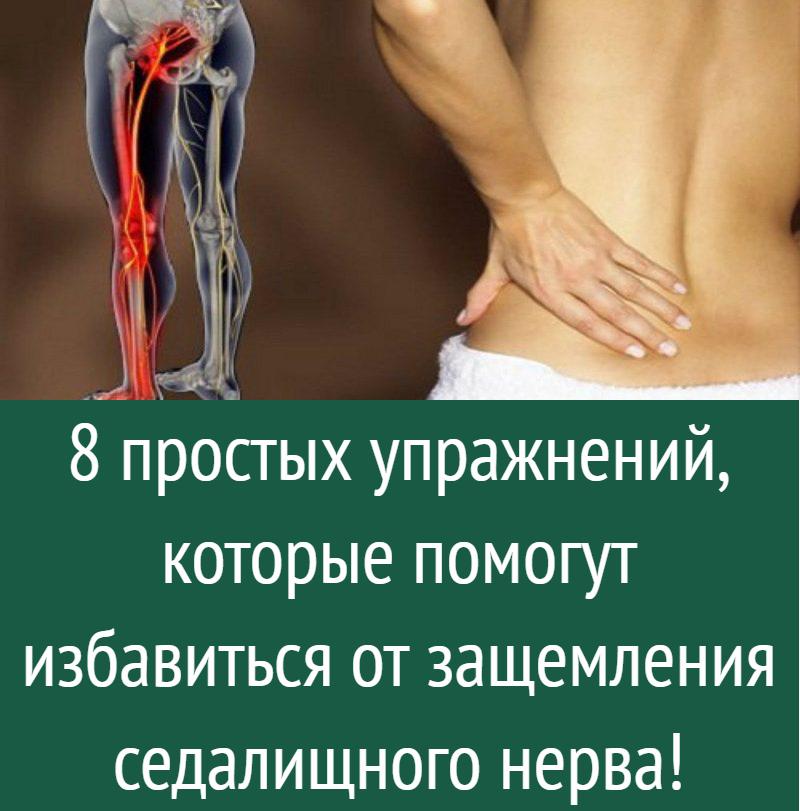 As intended by nature,
As intended by nature,
for its optimal functioning, a mature female body must be under
well-coordinated and rather monotonous effect of sex hormones. This means,
that a woman from the beginning of menstruation to menopause must be either pregnant,
either by a nursing mother, and hormone fluctuations are allowed only for
conception 3 .
At present, such a large number
pregnancies are rare, so menstrual cycles are accompanied
sharp hormonal fluctuations 3 . premenstrual syndrome and
dysmenorrhea often coexist. Perhaps they are combined
general mechanisms of development, including the role of prostaglandins. Besides,
Besides,
they are linked by psychosocial factors: dysmenorrhea pain
provokes negative thoughts that make them even more pronounced
manifestations of PMS 1 .
PMS is more likely to develop in
women engaged in mental work, suffering from vegetative
dystonia, 4 times more often – with a lack of body weight 7 .
Classification
syndrome
Painful periods are not the norm, but a disease that is called
“dysmenorrhea”. Especially severe dysmenorrhea can occur accompanied by
premenstrual syndrome, when a set of painful, painful symptoms
expands. In addition, dysmenorrhea can act as a bright
In addition, dysmenorrhea can act as a bright
a sign of other pathological processes in the body that are aggravated
during menstruation.
Dysmenorrhea occurs
2 :
- Primary. Considered a functional disorder because
no damage to the structure of the reproductive organs can be identified.
May begin as early as adolescence, 1–3 years after the first
menses. - Secondary. Symptoms often appear several years after onset
monthly. Secondary dysmenorrhea always has an organic cause –
changes in the pelvic organs: inflammation, endometriosis, adhesions.
The influence of external factors is not excluded, for example, the use
intrauterine device, etc. 1
1
Also manifestations of dysmenorrhea vary in severity
2 :
- Mild — pain is mild, daily activity is not reduced.
- Moderate Significant pain, decreased daily activities,
which can be maintained by taking painkillers. - Severe – in addition to severe pain, there are other symptoms (headache
pain, nausea, vomiting, diarrhea, etc.). Painkillers are ineffective.
Treatment of dysmenorrhea
Treatment of dysmenorrhea using drugs in combination with non-drug
methods. Non-drug therapy should begin with lifestyle changes.
It is recommended to exclude psycho-emotional and physical overloads,
long (7-8 hours) night sleep, moderate physical activity is required
load. A good result is walking, jogging, cycling.
You can choose an activity according to your interests – dancing, step aerobics, yoga 4,
7.14 .
Foods that contribute to fluid retention should be removed from the menu.
body (salt, sugar, alcohol), and to improve digestion it is worth
add complex carbohydrates (cereals, nuts, cereals) and fiber (vegetables,
fruit) 4, 7 :
Is it possible to self-medicate?
In most cases, without pharmacotherapy aimed at normalization
menstrual cycle and a decrease in the level of prostaglandins, bypass
not possible 12 .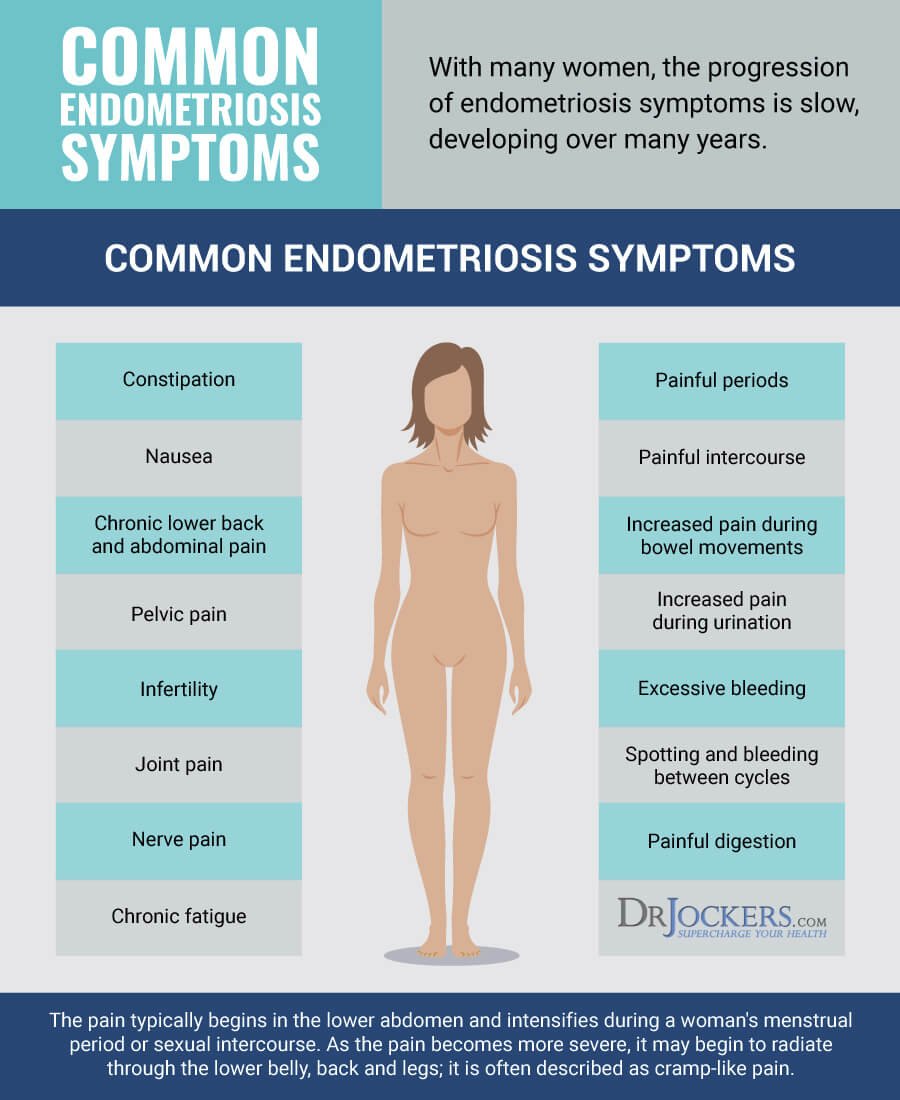 For treatment to be effective, it is important
For treatment to be effective, it is important
to establish the cause of pain, their nature and other features of the body.
Therefore, there is no need to postpone the visit to the doctor until later.
Drug treatment
Several groups are used to treat dysmenorrhea
preparations 3.9 :
- multivitamins;
- preparations of magnesium;
- nonsteroidal analgesics;
- antispasmodics;
- hormonal preparations (combined oral contraceptives,
gestagens) and others.
Although the treatment of muscle soreness should be individualized in
each case, it usually starts with painkillers. As
As
non-narcotic pain reliever (analgesic)
paracetamol has proven itself: it was effective as an emergency
to relieve acute pain, as well as in the long-term treatment of chronic
pain syndromes. According to scientific studies, paracetamol is not
inferior in analgesic effect to non-steroidal anti-inflammatory
drugs, but, unlike them, has a low risk of complications with
aspects of the cardiovascular and digestive systems 19 .
The combination of the antispasmodic drotaverine and the non-narcotic analgesic paracetamol acts selectively for spasm and specifically for pain 13 .
Read more
The main goal of dysmenorrhea care is to reduce or eliminate pain
lower abdomen.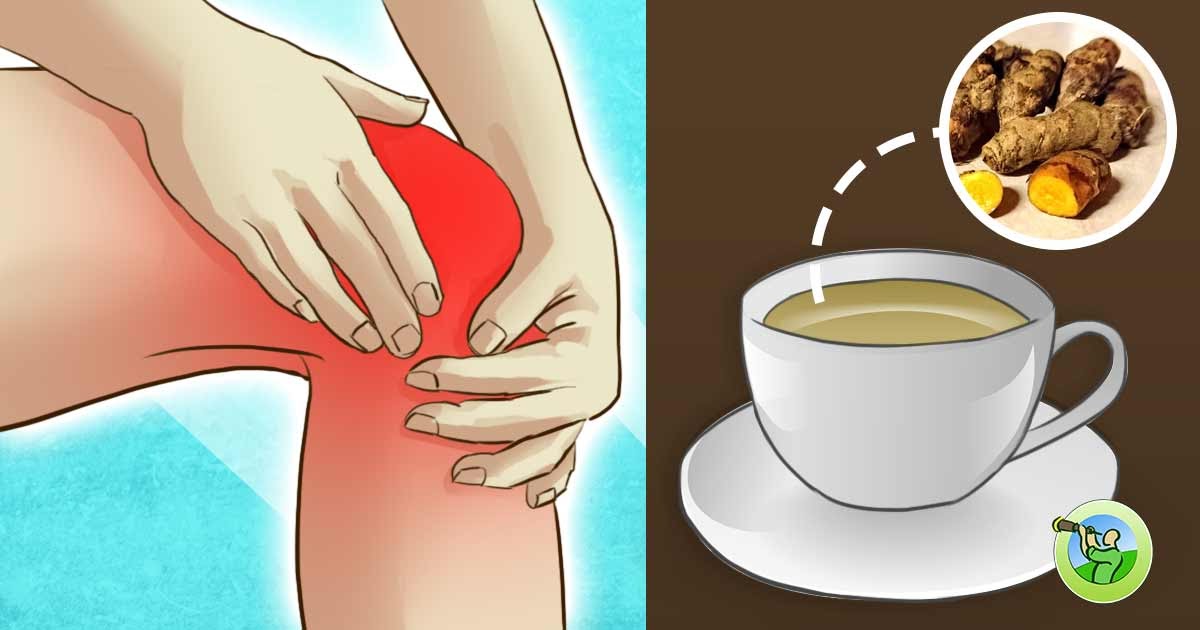 Paracetamol is considered the drug of choice for the treatment of pain in
Paracetamol is considered the drug of choice for the treatment of pain in
menstruation 20 Paracetamol blocks the formation of prostaglandins and
thus reduces the severity of pain sensations 13 .
As an adjunct to the treatment of dysmenorrhea to control pain caused by
spasm of smooth muscles, antispasmodics may be prescribed. Antispasmodic
drotaverine blocks excessive uterine contractions, improves blood circulation
organ, which may contribute to pain relief in dysmenorrhea 9 .
No-shpa® Duo contains
paracetamol and drotaverine, and therefore has a double action of an analgesic and
antispasmodic. No-shpa® Duo
No-shpa® Duo
Helps relieve symptoms of mild to moderate dysmenorrhea
gravity 13 .
Find out more about
No-shpa® Duo
find out
Show
sources
MAT-EN-2103226 – 3.0 – 03/2022
PMS – premenstrual syndrome.
- Uvarova E. V., Khashchenko E. P. et al. Combination
premenstrual syndrome and dysmenorrhea in young
women: features of management // Effective
pharmacotherapy. 2020. V. 16. No. 7. S. 24–28. - Prilepskaya V.
 N., Mezhevitinova E. A. Dysmenorrhea.
N., Mezhevitinova E. A. Dysmenorrhea.
RMJ No. 3 dated 04.02.1999: 6. - Uvarova E. V., Gainova I. G. et al. Rationale
choice of therapeutic effect for dysmenorrhea, taking into account
hormonal status of adolescents. breast cancer
No. 16 dated 08.08.2006: 1205. - Lekareva T. M. Methods for correcting premenstrual
syndrome. Attending doctor. #10/07. - Delyagin V. M. Decrease in bone density in different
age periods. Medical advice. 2012; 2:
Medical advice. 2012; 2:
94–98. - Gumenyuk O., Chernenkov Y. Dysmenorrhea in girls
in puberty: prevalence, causes
and principles of therapy. Doctor. 2015; 3:63–66. - O. V. Kurushina, V. V. Miroshnikova et al.
Premenstrual syndrome: neurological aspects.
RMJ No. 13 dated July 28, 2016, pp. 866–869. - Godzenko A.A. Topical issues of therapy
myofascial syndrome. Attending doctor.
Attending doctor.
#5/12. - Jobava E. M., Mandrykina J. A. et al.
Dysmenorrhea. Etiopathogenesis, differential
diagnostics and therapy in the practice of modern
obstetrician-gynecologist. breast cancer. mother and child
#1 of 19.01.2012 page 28. - Dadasheva M. N., Agafonov B. V. Radiculopathy:
modern tactics of patient management. breast cancer
“Medical Review” No. 3 dated April 18, 2016 p.
163–165. - Mityukov V.A., Simarova A.V. et al. Modern
views on the problem of the occurrence of diseases
of the musculoskeletal system in women during the period
perimenopause and menopause. Prevention and physical
rehabilitation. Pedagogics, psychology,
medical-biological problems of physical training and
sports. 2008; 1–7. - Zofia Barcikowska, Elżbieta Rajkowska-Labon et al.

Inflammatory Markers in Dysmenorrhea and Therapeutic
options. Int J Environ Res Public Health. Feb 2020;
17(4): 1191. - Instructions for medical use
drug No-shpa® Duo (tablets
drotaverine 40 mg + paracetamol 500 mg). Reg.
certificate LSR-000858/10. - Veropotvelyan P. N. et al. Modern approaches
to the management of patients with dysmenorrhea. Medical
Medical
aspects of women’s health. 2016: 6 (103):
28–36. - Co. Koloskova A., Vorobieva O. HYPOVITAMINOSIS D I
CHRONIC PAIN // Doctor. 2018. No. 9. URL:
https://cyberleninka.ru/article/n/gipovitaminoz-d-i-chronicheskaya-bol
(date of access: 04/15/2021). - Rogozhina I. E., Neyfeld I. V. Application experience
Neurodiclovitis in the treatment of primary dysmenorrhea.
Pharmateka. 2010; 20:90–94.
- Hosseinlou A, Alinejad V, Alinejad M, Aghakhani N.
The effects of fish oil capsules and vitamin
B1 tablets on duration and severity of dysmenorrhea
in students of high school in Urmia-Iran. Glob
J Health Sci. 2014 Sep 18;6(7 Spec No):124–9. doi:
10.5539/gjhs.v6n7p124. - Shilov A. M. Connective tissue dysplasia
and magnesium deficiency. Pharmateka. 2010.20(213):
35–38. - Karateev A.
 E. Simple analgesic paracetamol. breast cancer
E. Simple analgesic paracetamol. breast cancer
No. 9dated April 29, 2010, p. 581. - Dobrokhotova Yu. E., Borovkova E. I. et al.
Primary dysmenorrhea: strategy and tactics of treatment.
Gynecology. 2018; 20(1):31–34.
see also
Abdominal pain
Upper abdominal pain
Abdominal pain
What is drotaverine used for?
About abdominal pain
New
Overview of antispasmodics
About abdominal pain
Therapy of abdominal pain
PRODUCTS
joint pain before menstruation
joint pain before . ..
..
Thyroid surgery
25 432 answers
Life after cervical cancer
9 0010 20,600 responses
Female alcoholism! Help, I’m falling asleep! Masto pathia. How to live with it?
14 547 responses
Early menopause
2514 responses
Ovarian cyst and laparoscopy responses
Breast cancer (breast cancer). What research is needed?
8916 answers
Advanced neuritis of the facial nerve ical urethritis… No more strength
19 356 responses
5 responses
Last –
Go to
#1
9001 1
#2
#3
#4
Attention0294
#5
New topics per day:
Vagina too narrow Gynecologist for admission
6 answers
Can this diagnosis be at 18 years?
5 answers
Donated blood and such results, how to understand them?
No responses
Pregnancy tests
2 answers
How to detect pancreatic cancer?
4 answers
Cyst.
 Pain in the ovary. Operation(?)
Pain in the ovary. Operation(?)1 answer
Reflux esophagitis
14 answers
mri?
3 answers
The vagina is low. How to adapt?
10 answers
Popular topics per day:
Men, how do you determine the absence of STDs in a girl?
119 answers
Is it possible to give an intramuscular injection in the arm?
20 answers
Reflux esophagitis How to adapt?
10 answers
Constipation. Who helps what?
9 answers
Can I have bowel cancer?
8 answers
How to cause menstruation?
8 answers
Gynecologist.


 1
1  N., Mezhevitinova E. A. Dysmenorrhea.
N., Mezhevitinova E. A. Dysmenorrhea. Medical advice. 2012; 2:
Medical advice. 2012; 2: Attending doctor.
Attending doctor.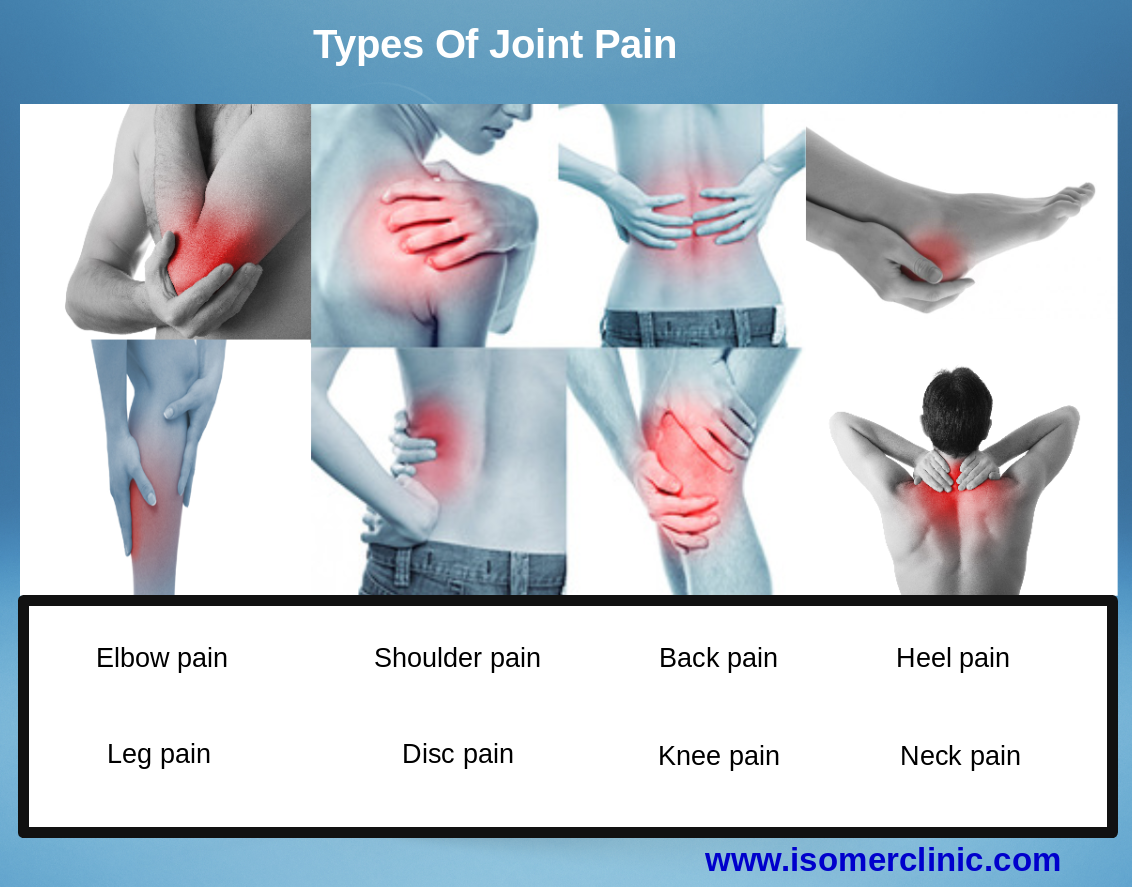

 Medical
Medical
 E. Simple analgesic paracetamol. breast cancer
E. Simple analgesic paracetamol. breast cancer Pain in the ovary. Operation(?)
Pain in the ovary. Operation(?)